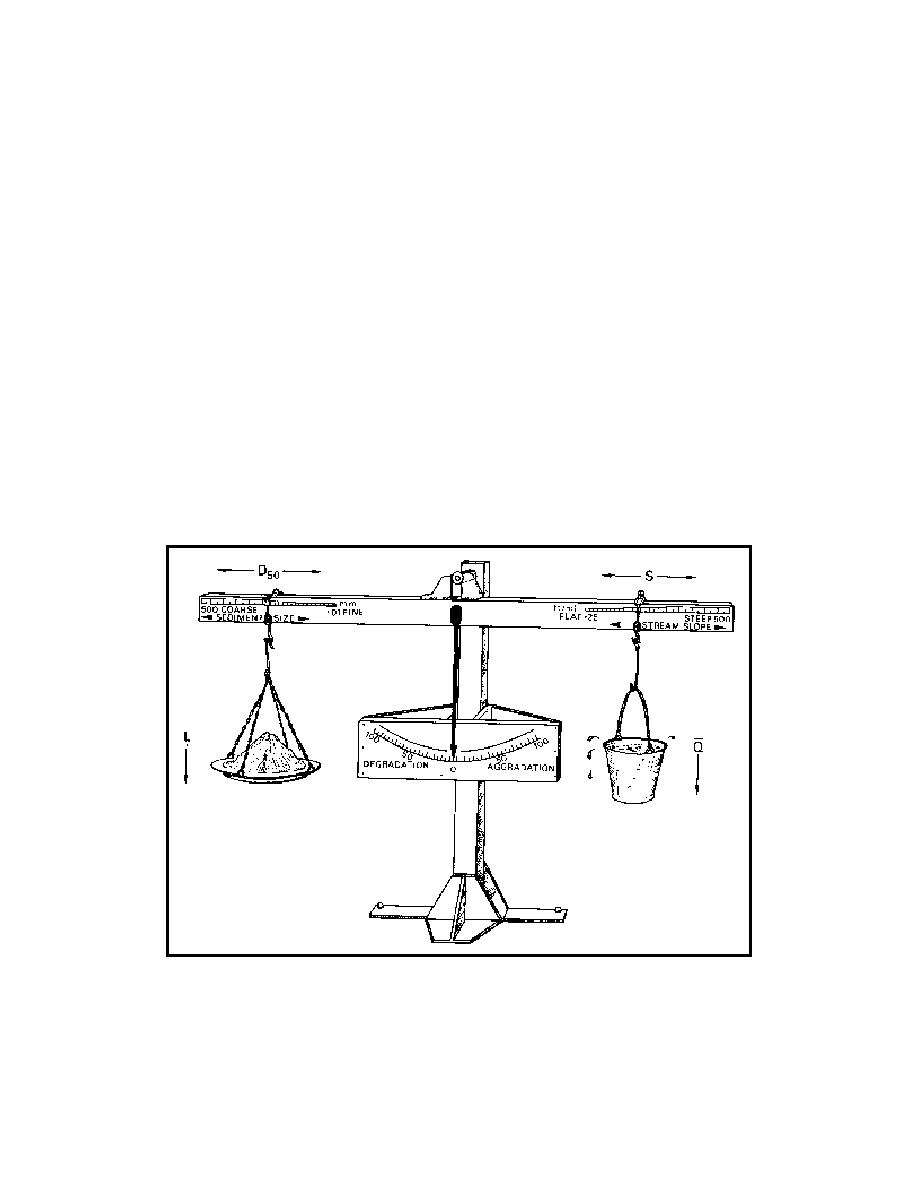
Fundamentals of Fluvial Geomorphology and Channel Processes
occurring in the stream bank, erosion may result, and bank stabilization may be necessary, even on the
banks of a stream in dynamic equilibrium.
The equilibrium concept of streams discussed above can also be described by various qualitative
relationships. One of the most widely used relationships is the one proposed by Lane (1955) which states
that:
QS % QsD50
where Q is the water discharge, S is the slope, Qs is the bed material load, and D50 is the median size of
the bed material. This relationship, commonly referred to as Lane's Balance, is illustrated in Figure 3.19.
Mackin's concept of adjustment to changes in the controlling variables is easily illustrated by Lane's balance
(Figure 3.19) which shows that a change in any of the four variables will cause a change in the others such
that equilibrium is restored. When a channel is in equilibrium, it will have adjusted these four variables such
that the sediment being transported into the reach is transported out, without significant deposition of
sediment in the bed (aggradation), or excessive bed scour (degradation). It should be noted that by this
definition of stability, a channel is free to migrate laterally by eroding one of its banks and accreting the one
opposite at a similar rate.
Figure 3.19 Lane's Balance (after E. W. Lane, from W. Borland)
Meandering can be thought of as nature's way of adjusting its energy (slope) to the variable inputs
of water and sediment. Cutoffs (oxbow lakes) and abandoned courses in the floodplain attest to the
51



 Previous Page
Previous Page
